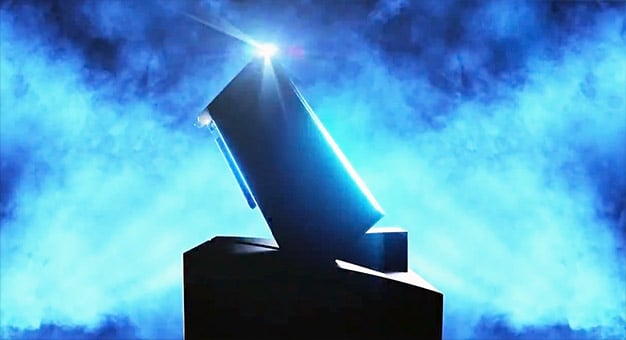Intel Exec Discloses Discrete GPU Details And Strategy
Intel Answers GPU Questions - Hardware And Software Disclosures

An Image From Intel's Discrete GPU Teaser Video
Will Intel’s new GPU architecture eventually migrate down onto the CPU or will the discrete and integrated solutions remain separate architectures?
Leveraging Intel’s broad portfolio of products is critical to building winning platforms: lots of performance, in compelling form factors, in compelling power envelopes. We’re excited by the opportunity to build technologies that will allow us to take experiences, features, and innovation to new and unique form factors, and to an install base of a billion screens around the world.
What is the target TDP for the initial launch products?
Another one that we would like to keep a surprise for now.

A Pair Of GeForce GPUs Running In SLI
Will Intel have a multi-GPU option, similar to NVIDIA’s SLI or AMD’s CrossFire?
Our desire is to participate a broad range of market segments and support the features and capabilities that consumers care about most. Scalability will be incredibly important and we’re looking at a variety of different strategies to achieve that.
Will a single discrete GPU be able to drive multiple monitors?
Our integrated offerings drive up to three monitors today. Multi-monitor support is something that we know is critical for consumers’ usage.
Will Intel’s initial discrete GPU offering be VR-Ready?
More on this in the future, but it’s worth pointing out that the majority of VR content produced to date is 360 degree video, and you can experience that today on our Gen 9 graphics.
Will Intel employ blower style or axial fan coolers on its GPU cards?
Great question! This is a good example of an area that we would like to get feedback from the community, and learn more about what’s important to them.

Raja Koduri, Chief Architect, SVP And GM Of Cores And Visual Computing
And Edge Computing Solutions - Intel
And Edge Computing Solutions - Intel
How will your discrete GPU plans affect developer engagement? Will your dev-rel team be expanding to engage directly with more game developers and ensure day-0 compatibility and performance optimizations?
We currently support a community of millions of developers with tools and resources from our Intel Developer Zone programs. Even today, gamers on one billion screens are being supported through our ISV collaborations to ensure Day 0 compatibility and game playability. This is something we’ll continue to invest in, to bring accessible gaming to multitudes of users across the planet.
Obviously DirectX, OpenGL, and Vulcan support will be a must, but does Intel have any plans to introduce any proprietary APIs?
We will definitely be committed to industry standards. We worked with MSFT with DirectX to deliver the world’s first fully compliant DirectX 12 GPU. We also see new opportunities on the software side and you’re going to hear a lot from us on our software strategy in the coming year.
Does Intel have plans to introduce any new graphics rendering features or capabilities not yet exploited in current generation GPU architectures and APIs?
Absolutely! Watch this space.
Although we were optimistic that Intel would disclose some juicy details regarding its upcoming discrete GPU, it’s still too early to expect any product-specific scoops just yet. We hope to stay engaged with Intel throughout the coming year though, and will bring you any and all news, as soon as we get details that we can pass on.






